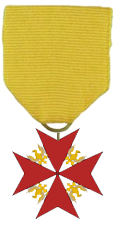|
The Order of the Pontifical Imperial State was established by the bull Per Ministerio Ecclesiae in 2021
as a reorganisation of the previously-awarded Florentine Service Order. The
order recognises significant
service to the modern Stato Pontificio Imperiale, the United Roman-Ruthenian Church, humanity,
or diplomatic or civil service. The patrons of the order are Saints Peter, Paul, Stephen, and Mark.
There
are 3 grades of the order:
Knight
Grand Cross/Dame Grand Cross
Knight
Commander/Dame Commander
Knight/Dame
The
insignia is worn from a yellow ribbon. The knights and dames grand
cross use
a
yellow sash worn over the right shoulder. The star, worn by holders of the
grand cross, is a red St. Stephen cross of approxmately 80mm diameter, with a gold eagle
upon a red background within a gold circular wreath, centred on the cross. Wear of Deocrations of the Pontifical and Imperial Orders
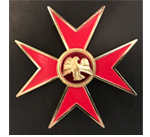
Grand Cross star of the order 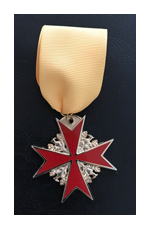 | 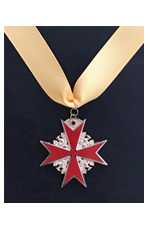 |  | | Knight's Medal | Commander's Insignia | Grand Cross Sash |
 Lapel Ribbons:
Lapel Ribbons:
Knight Grand Cross, Commander, and Knight
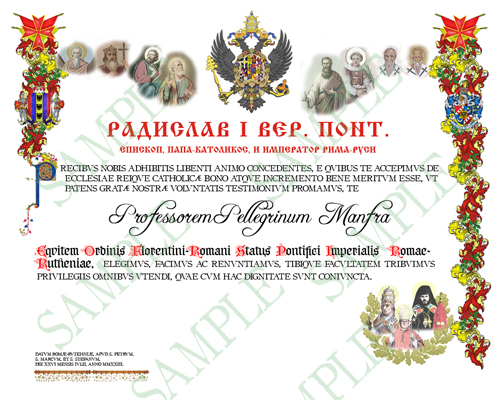
Return
to the orders page.
Nota
Bene: These orders are given exclusively by the United Roman-Ruthenian
Church, Stato Pontificio Imperiale di Roma-Ruthenia as historic orders
of the Stato
Pontificio. H.H. the Bishop of Rome-Ruthenia holds the exclusive right to
confer them.
They
are distinct from the modern state orders given by the Vatican
City-State or any other state.
|


